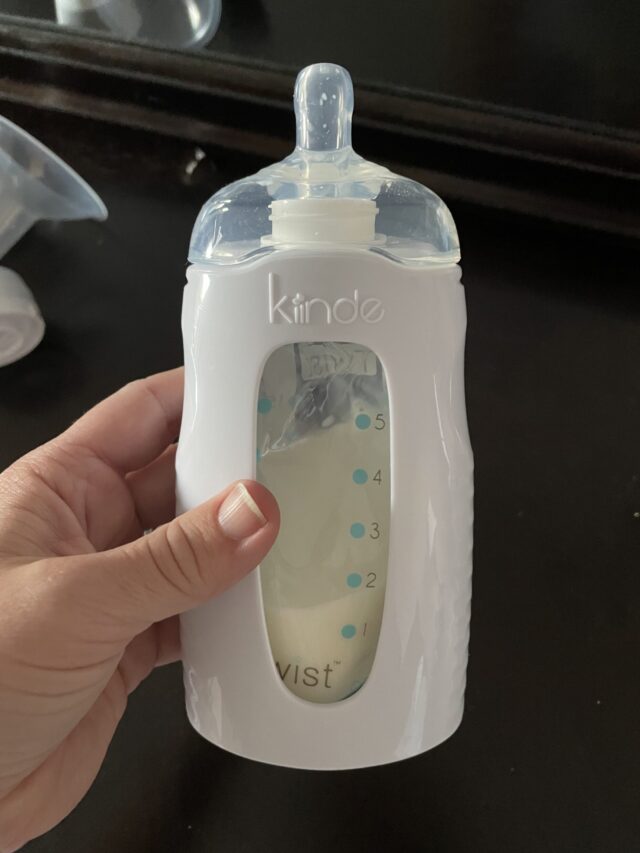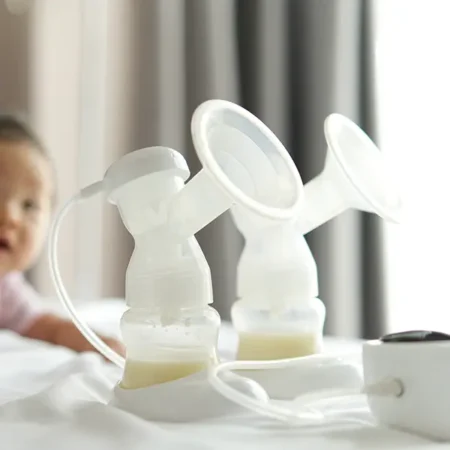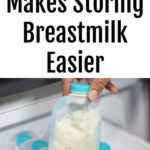Are you tired of washing bottles all of the time? The Kiinde pumping and feeding system might be a good option for you, because it can reduce the number of bottles you have to wash! Here is a Kiinde Twist review, including how it works, and the advantages and disadvantages.
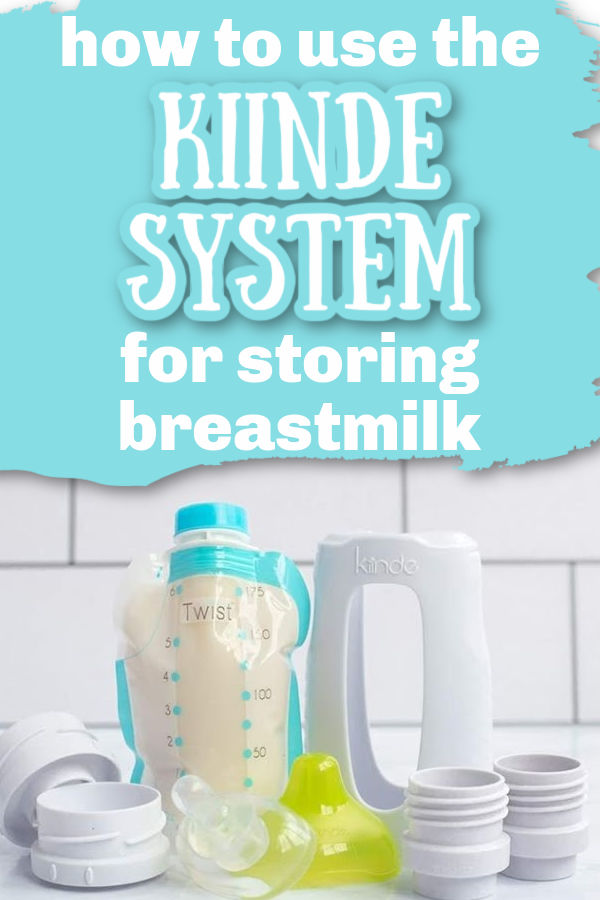
This post may contain affiliate links, which means if you click a link and take action, I may make a small commission at no additional cost to you. I only recommend products I love! More information here.
What is the Kiinde Twist?
Kiinde is a pumping and feeding system where you pump directly into a breast milk storage bag, store the milk in the bag, and then feed from that bag (using a bottle that screws onto it).
This way, there is no transferring milk from bottle to bag – which means no spilling – and no bottles to wash.
How does it work?
It’s pretty simple! When you go to pump, you attach your pump parts to the Kiinde bags using an adapter. Then you pump as you normally would into the bags.
When you’re finished pumping, you screw the top onto the bags, and then store them in either the fridge or freezer.
When it’s time to feed your baby the milk, you thaw and/or warm the bag that you want to feed your baby. (Kiinde has it’s own warmer, but you can just use water if you’d like.)
Then, you screw the bag into a Kiinde bottle, and feed it!
You can see more of how it works here:
Does Kiinde work with all breast pumps?
It works with all major pumps where you would normally pump into a bottle, including Medela, Spectra, Ameda, Baby Buddha, Evenflo, Ardo, Hygeia, and Lansinoh.
It’s not compatible with pumps where you pump into cups that are placed in your bra, such as Freemie pumps, the Willow, or the Elvie.
What are the advantages of the Kiinde system?
Some of the advantages of using the Kiinde system include:
- With the Kiinde system, you never have to transfer milk from bottle to bag to bottle, which means no spilled milk and fewer germs.
- No washing or sterilizing bottles when you pump into and feed from a Kiinde bag. Additionally, you have less clutter on your counter, because you have fewer bottles sitting out to dry.
- Kiinde bags have a secure leak-proof twist cap, which means no lost liquid gold. They are also sturdier than other breast milk bags.
What are the disadvantages of the Kiinde system?
A few of the disadvantages include:
- Because you use two bags each pumping session, and because the bags can’t be reused, the cost of the bags does add up if you use it exclusively.
- The bags take up a bit more room in the freezer than other breast milk storage bags because they are hard to freeze flat.
- Kiinde bags are not reusable. The bags need to be discarded after each use, which isn’t the most environmentally friendly option. However, they can be recycled.
Is Kiinde a good system for exclusive pumpers?
I think Kiinde can be a good tool to have in your exclusive pumping system, but because of the number of bags you would need, I’m not sure I would pump into Kiinde bags alone. (For example, say you pump 6 times a day – you’d need 12 bags per day, or 84 per week.)
What I would do is consider if adding it to your overall pumping and feeding routine would make sense. Some ideas include:
1. Use them when you know you’re going to freeze the milk
You could pump into a Kiinde bag when you know you are going to freeze the milk that you pump.
For example, say you are planning to freeze about half of your output from one session. At that session, you could pump into a Kiinde bag on one side (and a bottle on the other), and then freeze the milk you pump into the bag.
2. Use a bottle on one side and a Kiinde bag on the other
Maybe you want to store and feed using Kiinde bags, but you need the output from both breasts to make a full feeding.
You could pump into a bottle on one side and a Kiinde bag on the other, and then pour the milk from the bottle into the bag when you’re done.
3. Use while traveling/pumping on the go
Some parents in our Facebook group have mentioned that they prefer to pump into Kiinde bags when they are traveling or pumping out of the house because they take up less space than bottles, and there is no need to wash a bottle before pumping again.
Hopefully this Kiinde Twist review helps you decide if trying it out makes sense for you.
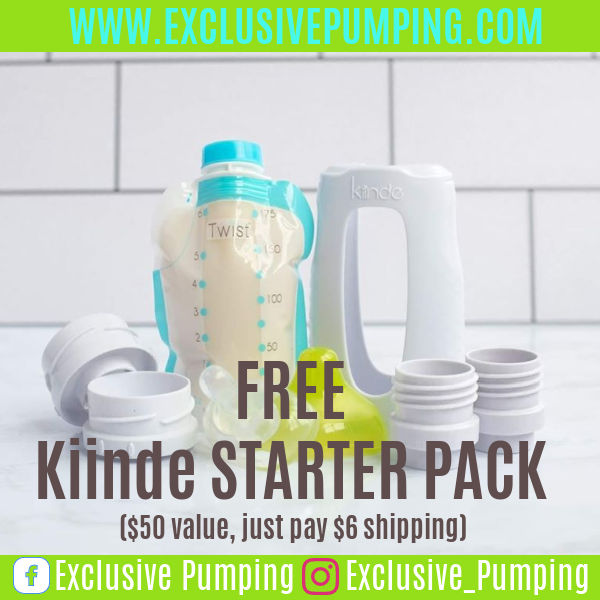
If you want to check it out, you can get a free Kiinde starter pack here. You just pay $6 for shipping! If you like it, you can get the whole system for 50% off.
Let us know if you have any Kiinde tips in the comments!
